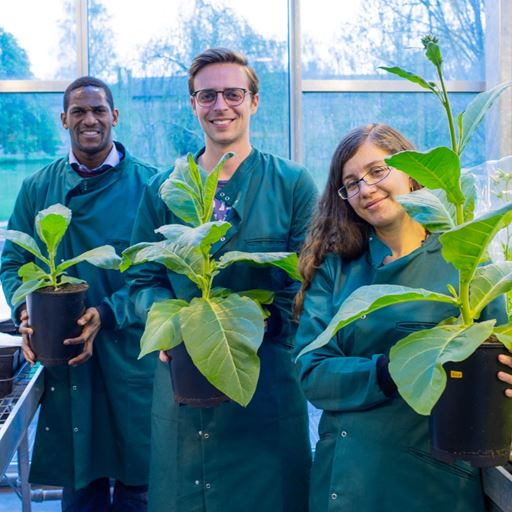Breakthrough shows photosynthetic hacks can boost yield and conserve water
-
Date
Mon 10 Aug 20

Essex scientists have resolved two major photosynthetic bottlenecks to boost plant productivity by 27% in real-world field conditions, according to a major new study.
Published in Nature Plants, this study is the third breakthrough for the research project Realizing Increased Photosynthetic Efficiency (RIPE) - but this photosynthetic hack has also been shown to conserve water.
Plants are factories that manufacture yield from light and carbon dioxide - but parts of this complex process, called photosynthesis, are hindered by a lack of raw materials and machinery.
“Like a factory line, plants are only as fast as their slowest machines,” said Patricia Lopez-Calcagno, a postdoctoral researcher at our School of Life Sciences, who led this work for the RIPE project. “We have identified some steps that are slower, and what we’re doing is enabling these plants to build more machines to speed up these slower steps in photosynthesis.”
The RIPE project is an international effort to develop more productive crops by improving photosynthesis - the natural, sunlight-powered process that all plants use to fix carbon dioxide into sugars that fuel growth, development, and ultimately yield. RIPE is supported by the Bill & Melinda Gates Foundation, the US Foundation for Food and Agriculture Research (FFAR), and the UK Department for International Development (DFID).
A factory’s productivity decreases when supplies, transportation channels, and reliable machinery are limited. To find out what limits photosynthesis, researchers have modelled each of the 170 steps of this process to identify how plants could manufacture sugars more efficiently.
In this study, the team increased crop productivity by 27% by resolving two constraints: one in the first part of photosynthesis where plants transform light energy into chemical energy and one in the second part where carbon dioxide is fixed into sugars.
“In our field trials, we discovered that these plants are using less water to make more biomass,” said principal investigator Professor Christine Raines. “The mechanism responsible for this additional improvement is not yet clear, but we are continuing to explore this to help us understand why and how this works.”
These two improvements, when combined, have been shown to increase productivity by 52% in the greenhouse. More importantly, this study showed up to 27% increase in crop growth in field trials, which is the true test of any crop improvement - demonstrating that these photosynthetic hacks can boost crop production in real-world growing conditions.
“This study provides the exciting opportunity to potentially combine three confirmed and independent methods of achieving 20% increases in productivity,” said RIPE Director Stephen Long, from the University of Illinois. “Our modelling suggests that stacking this breakthrough with two previous discoveries from the RIPE project could result in additive yield gains totalling as much as 50 to 60% in food crops.”
RIPE’s first discovery, published in Science, helped plants adapt to changing light conditions to increase yields by as much as 20%. The project’s second breakthrough, also published in Science, created a shortcut in how plants deal with a glitch in photosynthesis to boost productivity by 20 to 40%.
Next, the team plans to translate these discoveries from tobacco - a model crop used in this study as a test-bed for genetic improvements because it is easy to engineer, grow, and test - to staple food crops such as cassava, cowpea, maize, soybean and rice that are needed to feed our growing population this century. The RIPE project and its sponsors are committed to ensuring Global Access and making the project’s technologies available to the farmers who need them the most.
Picture: from left: Chidi Afamefule holding an unmodified control plant, Kenny Brown holding a plant modified to resolve one bottleneck, and Patricia Lopez-Calcagno holding a plant modified to resolve two bottlenecks. Photo credit: RIPE Project/Claire Benjamin
.jpg?mh=500&mw=500&hash=6568B6C9CCF5290A596BEF6678B6AD0E)



